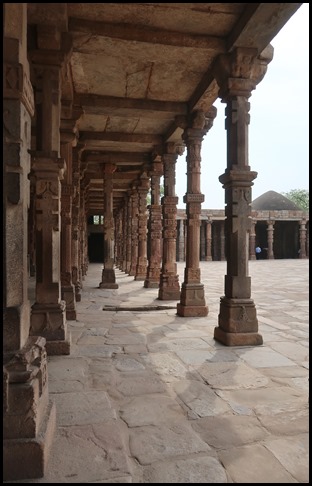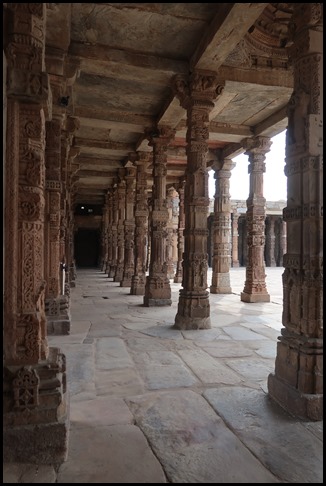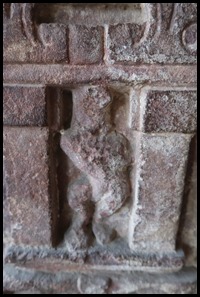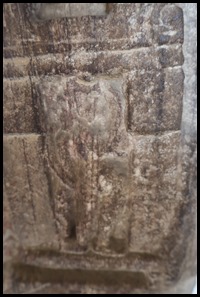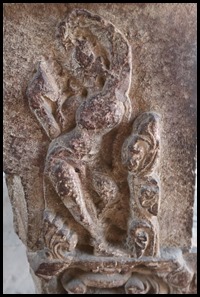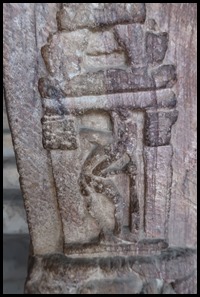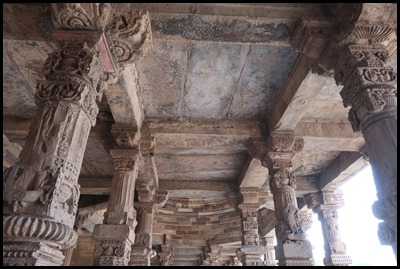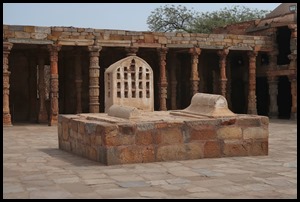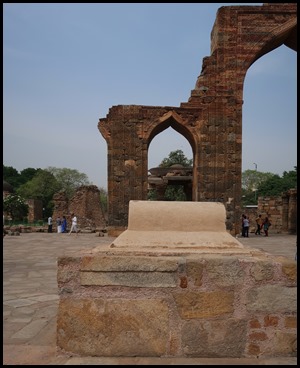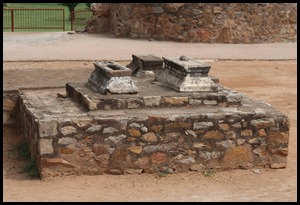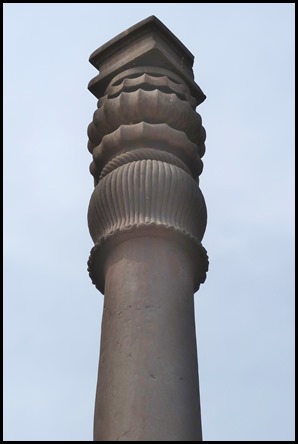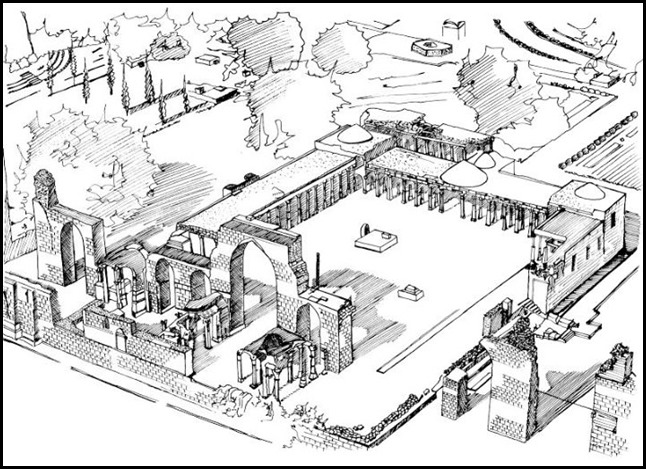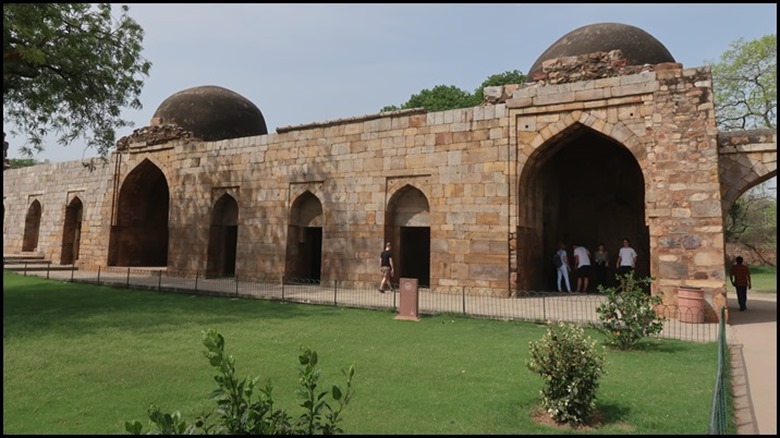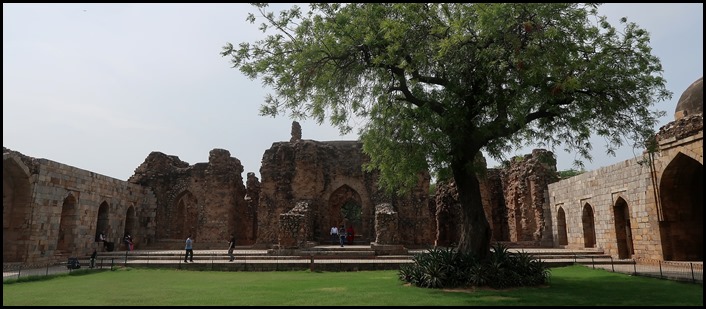Quwwat-ul-Islam Mosque

|
Quwwat-ul-Islam Mosque
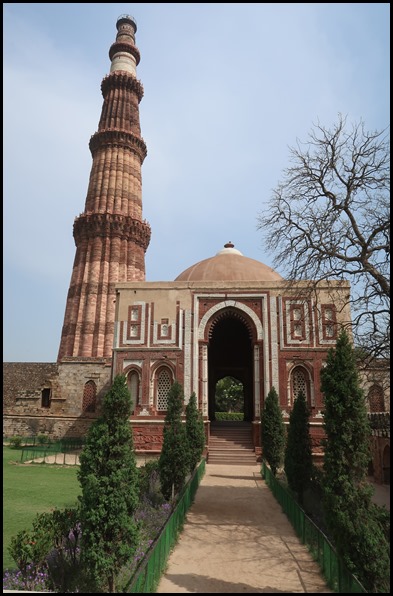 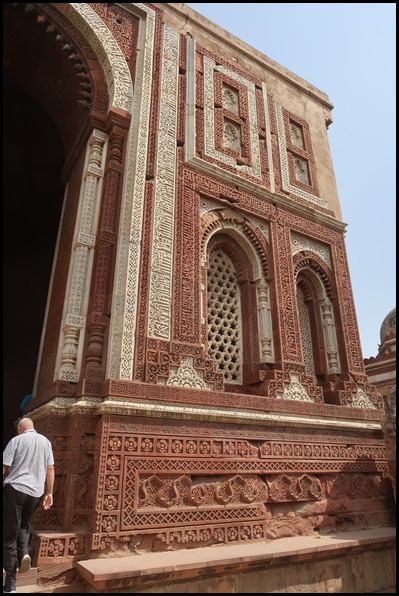 After
admiring the Qutb Minar (tower) we
bimbled toward the gate to the mosque complex. The
Alai Darwaza is the main gateway
from southern side of the Quwwat-ul-Islam Mosque. It was built by the
second Khalii Sultan of Delhi, Ala-ud-din Khalii in 1311 AD. The
domed gateway is decorated with red sandstone and inlaid white marble
decorations, inscriptions in Naskh script, latticed stone screens -
remarkable craftsmanship of the Turkish artisans. This is the first building in
India to employ Islamic architecture
principles
in its construction and
ornamentation.
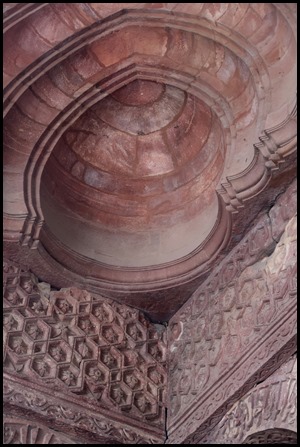 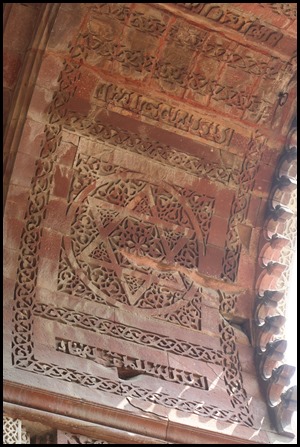 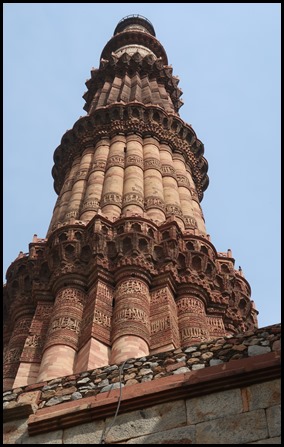 Lovely carved support pillars
and an open archway took us toward the complex
proper. Looking up at the Qutb
Minar.
 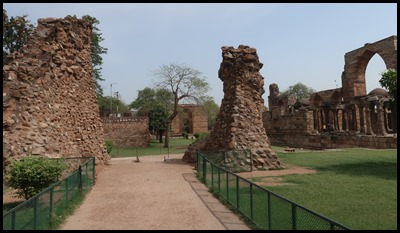 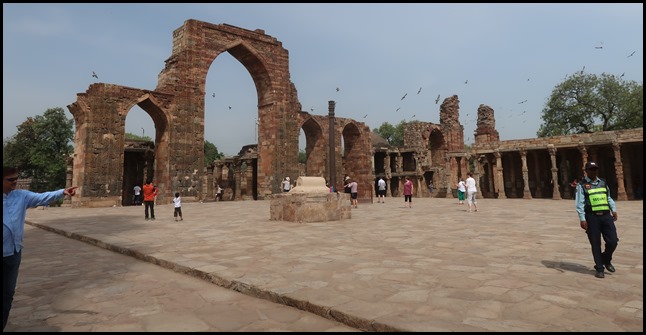 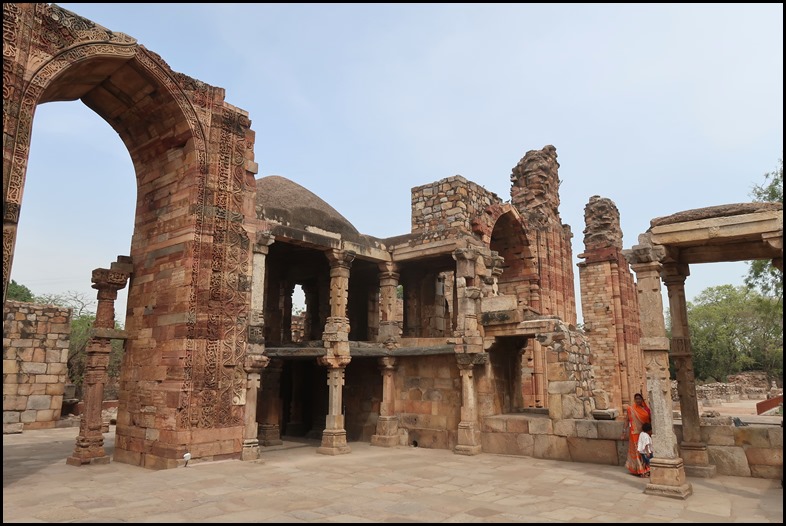 Quwwat-ul-Islam mosque (built at the same time as the tower), is one of the earliest that survives in the Indian subcontinent. The minaret is named after Qutb-ud-din Aibak, a Sufi saint. Quwwat-ul-Islam (built between 1192-1316) was started by Qutb-ud-din Aibak, founder of the Mamluk dynasty. Born a slave in Turkey, Qutb rose to prominence as a general during Muhammed Ghari's invasion of India in the 1180’s. After Muhammed's assassination in 1206, Qutb seized the throne and crowned himself Sultan of the Mamluk dynasty, often disparagingly called the "Slave Dynasty" after Qutb's origins. Although the dynasty lasted for only a few centuries, Muslim rule in India endured up to the British occupation in 1858.
Qutb was a fanatical Muslim. When his garrison occupied Delhi under the command of Muhammed Ghari in 1192, he ordered the destruction of twenty-seven Hindu and Jain temples to furnish building materials for the construction of Delhi's first mosque. Quwwat-ul-Islam, the "Glory of Islam," was hastily erected by the young Amir, who conscripted an army of local craftsmen, presumably Hindus, to assemble the structure. The Hindu stonemasons reused columns from the destroyed temples, but adapting them to use in a mosque proved problematic given Islam's injunction against the use of images in temples.
The masons were forced to plaster over the highly sculpted Hindu columns, cover some with geometric designs whilst others had features and faces chipped off. However, after centuries of neglect those that had been given a plaster plaster (couldn’t resist that one) has fallen away, revealing some of the original Hindu carvings.
Sturdy supports and a beautiful central dome.
The pillared cloisters.
We were told that tombs on the courtyard protected the site from ever ‘having a change of use’.
The Quwwat-ul-Islam is best known for its tower of victory – the Qutb Minar, celebrating the Muslim conquest of India. That is thought to have been inspired by the iron "Pillar of the Law" that stands on the site. Built in the Mauryan dynasty in the 6th century, it is the only piece of the temple that stands in its original location. Qutb built around the pillar Law when he constructed the mosque, although made of iron, it has resisted rust for over 1,500 years, evidence of the Mauryan's superb metallurgical skills. The translation of the writing engraved on the pillar is on a wall nearby.
Expansion of the mosque continued after the death of Qutb. His son-in-law Altamash (or Illtutmish) extended the original prayer hall screen (1211 – 36) by three more arches, seen from across the courtyard which measures 43.2 by 32.9 metres. By the time of Altamash the Mamluk empire had stablised enough that the Sultan could replace most of his conscripted Hindu masons with Islamic ones. This explains why the arches added under Altamash are stylistically more Islamic than the ones erected under Qutb's rule.
A sketch of the mosque as we saw it today.
Just to the west of the expanded mosque, Altamash built his own tomb, the first to be erected for the Delhi Sultanate. Despite the presence of Muslim craftsman, the tomb is mostly Hindu in design if not in execution. Much of the superstructure and most of the walls are built of pillaged building material. Altamash's body was laid to rest in a subterranean chamber beneath the tomb. The decline of Quwwat-ul-Islam began during the rule of Ala-ud-din (1296 - 1316), known to the West as "Alladin". Ala-ud-din at first seemed inclined to patronize the mosque, even adding an enormous new courtyard wall and erecting the base of a huge new minar (tower). However, Ala-ud-dins dreams were so grand that he decided to abandon the Lal Kot (Delhi) capital and move to nearby Siri, whereupon Quwwat-ul-Islam lost its pre-eminence.
We bimbled from the cloisters, through the three arches of the mosque and out into a huge area, to the right various tombs and ruins, ahead a building that has been restored and is now used as a prayer hall.
To the left of the prayer hall is Alauddin Khalji’s Madrasa - an Arabic word for any type of educational institution – here it was an Islamic ‘seminary’. His tomb is also here.
Outside the mosque we wandered over to the unfinished minar. This area has more tombs and buildings.
ALL IN ALL A FASCINATING COMPLEX LOVED THE STAR OF DAVID AND HINDU IMAGES IN THE MOSQUE |
